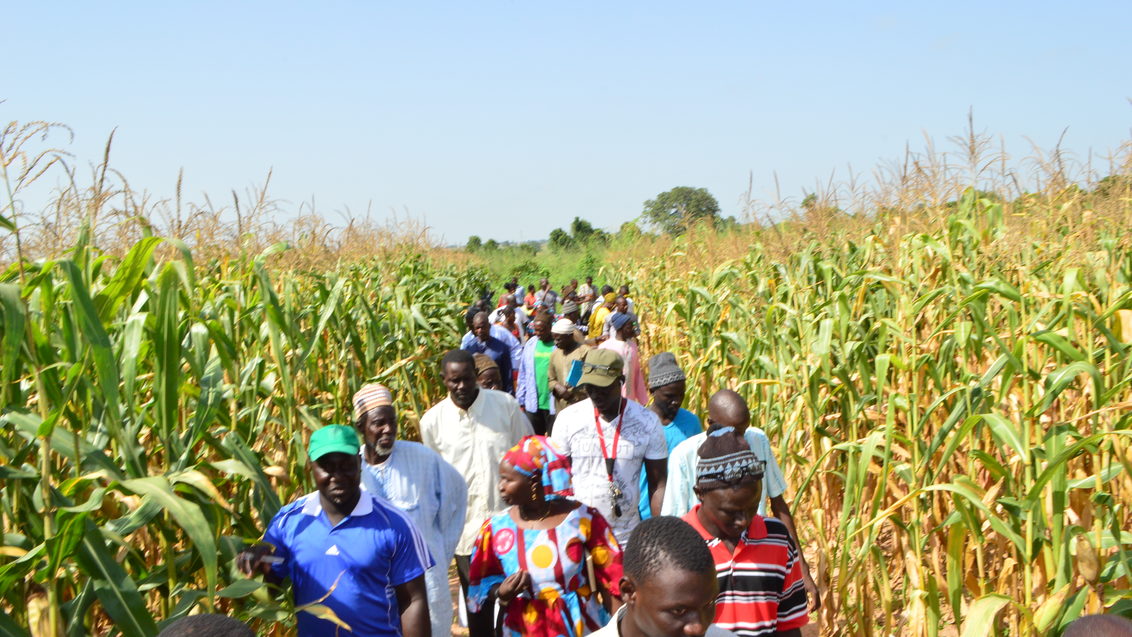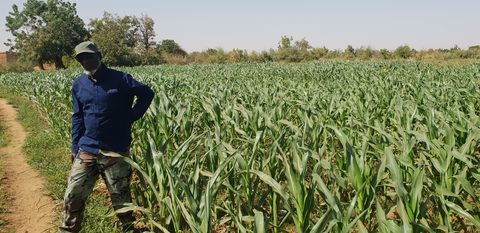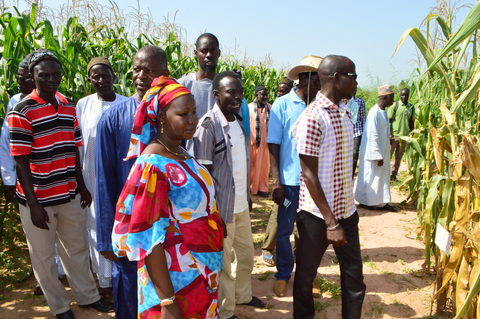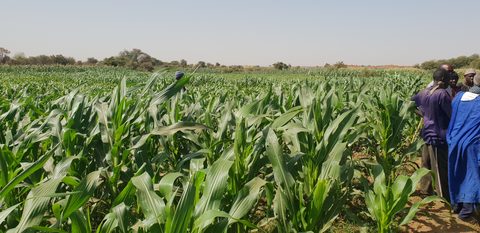New corn variety could lift a whole region

(Version française en bas)
What difference could a new corn variety make in West Africa? Our Foundation’s Seeds2B team is using one to tackle malnutrition and contribute to food security.
In Senegal, corn (maize) is one of the main staples alongside rice, sorghum, and cowpea. Much of it grows in the remote Matam area. Lack of access to good seed is a major break in agricultural development there. Another challenge is flight from rural areas to urban centers. Lack of rural labor means many fields are left fallow, making it even harder to meet the region’s food needs.
The Syngenta Foundation faces similar challenges in many places. Part of the international response by our Seeds2B team is through the PASTTA* project. In Matam, working closely with the local seeds company, Kane & fils, this project has introduced a new hybrid corn variety called "Kabamanoj".It has a yield potential of more than five tonnes per hectare and offers farmers the prospect of good income all year.
“Kabamanoj really is corn ‘par excellence’”, says Abdoulaye Diop, our PASTTA Program Manager in Senegal. “In all the trials, it performed even better than we’d expected. All the farmers like it, from Matam to Kolda and from Kaolack to Medina Gounnass.” As Matam farmer Saliou Barry puts it: “My colleagues all agree that Kabamonoj is a great performer. We really like the grain-fill and the number of cobs per plant.”
The Foundation wants to improve access to this variety across the entire Matam region. The demand is definitely there! Souleymane Diagana produces seed in Hamady Ounaré. He says: “All the growers I’ve asked agree it would be really good to have Kabamonoj multiplied round here as well. Farmers in the whole region could get better yields and higher profits. Longer-term, the whole country could benefit, as well as our neighbors in Mali and Mauritania.” Mutual recognition agreements in the CEDEAO joint trade area should make international transfer straightforward.
The PASTTA project brings together participants from the public and private sectors. “There is a strong emphasis on ‘South-South’ development”, Abdoulaye Diop points, “because local producers and distributors work with the farmers.” Aboubakry Kane, for example, runs a seed business in Agnam. He says: “Kabamanoj is well on its way to ending the lack of good corn seed in our region. My customers are really keen on it. So if we can get the right quantities at the right time, the variety is good news for my company as well. One of the great advantages is that you can grow Kabamanoj pretty well all year round.”
The authorities value the new variety as well. Abdoulaye Diagne from the local office of the Rural Development Board says Kabamanoj displays “remarkable quality”. He particularly likes the “well-packed cobs and well-formed stalks”. The key step in his opinion is to get the seed multiplied and out to smallholders. “That will help put new life into the whole corn value chain around here”, he believes.
*PASTTA is the Partnership for Seed Technology Transfer in Africa between USAID and the Syngenta Foundation for Sustainable Agriculture. It primarily focuses on transferring seed-related technologies to smallholders, in order to increase their harvests and income.
Here's what PASTTA is doing in Uganda, Kenya and Mali. (Mali aussi en français).



